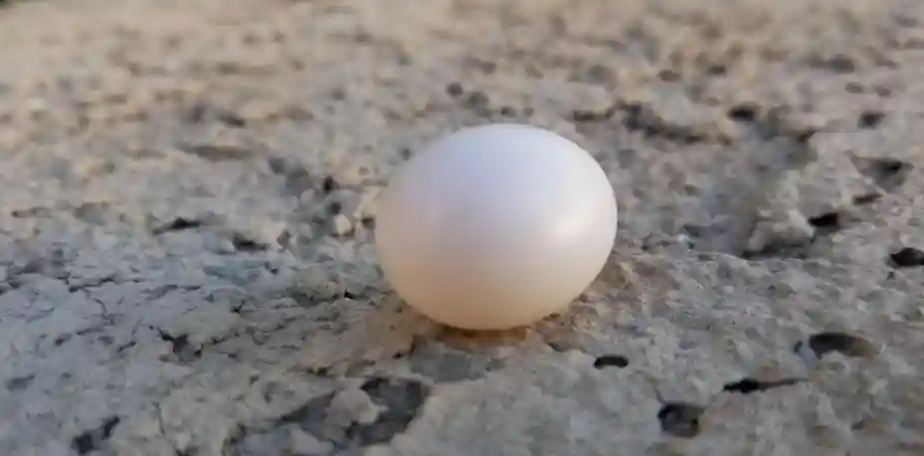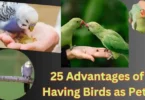When it comes to avian wonders, the world of doves and pigeons presents a fascinating landscape. These birds, although often mistaken for one another due to their similar appearance, are distinct in several ways. In this comprehensive article, we delve deep into the details of mourning doves and pigeons. Shedding light on their physical characteristics, behavior, habitat, and more. Our aim is not just to differentiate between the two but also to provide an informative resource that helps you appreciate these fascinating creatures.
Key Differences Between Mourning Dove versus Pigeon
| Characteristic | Mourning Dove (Zenaida macroura) | Pigeon (Columba livia) |
| Size | 9-13 inches in length | 11-15 inches in length |
| Wingspan | 17-18 inches | 20-26 inches |
| Coloration | Pale grayish-brown with a hint of pink on the chest | Varied, including shades of gray, white, and iridescent colors |
| Tail Shape | Long and pointed, with white edges and a black spot near the base | Rounded and bulkier |
| Eye Skin | Bare, blue skin around the eyes | Narrow band of skin around the eyes, often with vibrant colors |
| Sound | Soft and mournful cooing calls | Cooing sounds, variable in tone and pitch |
| Behavior | A narrow band of skin around the eyes, often with vibrant colors | Social birds that often form large flocks, adaptable to urban environments |
| Habitat | Open fields, gardens, urban areas | Urban settings, varied environments |
| Nesting | Flimsy nests in trees, shrubs, or building ledges, monogamous behavior | Bulkier nests on ledges, rooftops, and elevated surfaces |
| Range and Distribution | Widespread in North America, migratory | Typically solitary or seen in small family groups, monogamous during the breeding season |
Mourning Dove versus Pigeon: Anatomy and Physical Features
Mourning Dove
Mourning doves, scientifically known as Zenaida macroura, are known for their slender, elegant appearance. They typically measure around 9-13 inches in length and have a wingspan of 17-18 inches. One of the most striking features of mourning doves is their soft, muted coloration. They sport pale grayish-brown feathers with a slightly pinkish hue on their chests, making them appear as if they are wearing a delicate blush.
The mourning dove’s tail is long and pointed, marked by white edges and a distinctive black spot near its base. Their eyes are encircled by a ring of bare, blue skin, creating a distinctive and almost sorrowful appearance, which is the origin of their name. These birds are renowned for their gentle cooing calls, often heard in the early morning or at dusk.
Pigeon
Pigeons, on the other hand, are bulkier and more robust than mourning doves. They belong to the family Columbidae and are scientifically referred to as Columba livia. Pigeons are generally larger, ranging from 11 to 15 inches in length with a wingspan of 20-26 inches. Unlike mourning doves, pigeons exhibit a wide range of color patterns, including shades of gray, white, and even iridescent greens and purples.
Pigeons are characterized by a more pronounced and rounded tail, lacking the long, pointed shape of the mourning dove’s tail. Their eyes are surrounded by a narrow band of skin, often with a more vibrant coloration than that of mourning doves. Pigeons are known for their distinctive cooing sounds, which can vary in tone and pitch among different species.
Behavior and Habitat: Mourning Dove versus Pigeon
Mourning Dove
Mourning doves are primarily seed-eaters and forage on the ground. They are often spotted in open fields, gardens, and urban areas. These birds are not particularly social and are usually seen in pairs or small family groups. Their flight is swift and graceful, marked by a distinctive whistling sound produced by their wing feathers.
During the breeding season, mourning doves build flimsy nests in trees, shrubs, or on building ledges. They are known for their monogamous behavior and often form strong pair bonds.
Pigeon
Pigeons, in contrast, are highly adaptable and can thrive in a variety of environments, including urban settings. They are opportunistic feeders, consuming a diverse diet that includes grains, seeds, and even human food scraps. Pigeons are known for their gregarious nature, often forming large flocks in urban areas.
Their nests are typically bulkier and more substantial than those of mourning doves, constructed on ledges, rooftops, and other elevated surfaces. Pigeons are known to be highly intelligent birds, and their ability to navigate and find their way home over long distances has been well-documented.
Range and Distribution: Mourning Dove versus Pigeon
Mourning Dove
Mourning doves are widespread across North America and can be found in a variety of habitats, from woodlands to deserts. They are migratory birds, with populations in the northern regions of their range migrating south during the winter months.
Pigeon
Pigeons are incredibly adaptable and have a global distribution. They are found on every continent except Antarctica, and their close association with human settlements has allowed them to thrive in urban areas worldwide.
Mourning Dove meaning
The term “mourning dove” refers to a specific species of bird known for its distinctive appearance and cooing sounds. Here’s a breakdown of the meaning:
- Species Identification: “Mourning dove” is the common name for a bird species scientifically known as Zenaida macroura. This species is widespread in North and Central America.
- Appearance: The name “mourning dove” is derived from the bird’s physical characteristics. These doves are typically pale grayish-brown with a slightly pinkish hue on their chests. They have a slender and elegant appearance, often resembling a bird wearing a delicate blush. Their eyes are encircled by a ring of bare, blue skin, which can give them a somewhat sorrowful or mournful look.
- Cooing Sound: Another distinctive feature of mourning doves is their soft and melodious cooing calls. These calls are often heard during the early morning or at dusk. The mournful and calming sound of their cooing has contributed to the naming of this species.
The term “mourning dove” refers to a bird species known for its elegant appearance and the gentle, mournful cooing sounds it produces. These doves are a common sight in many parts of North and Central America.
The mourning dove sound
The sound of a mourning dove is distinctive and often described as soft, mournful, and soothing. It is a series of cooing notes that may vary in intensity and pitch. The mourning dove’s call is commonly characterized as a “coo-AH, coo, coo” pattern, with the second “coo” being quieter and slightly lower in pitch than the first.
The calls of mourning doves are gentle and melodious, and they are frequently heard during the early morning and late afternoon. Many people find the sound of mourning doves to be quite calming and evocative of a peaceful natural environment.
These cooing sounds serve multiple purposes for mourning doves, including communication between mates, establishing territory, and attracting potential mates during the breeding season. Overall, the mournful cooing of the mourning dove is a distinctive and pleasant auditory feature of many outdoor settings, especially in regions where these birds are common.
What does a mourning dove eat?
Mourning Doves primarily feed on a diet consisting mainly of seeds. Their diet includes:
- Seeds: The majority of a mourning dove’s diet consists of seeds. They are particularly fond of seeds from various plants and trees, including grasses, weeds, and cultivated crops like wheat, corn, and sunflower seeds.
- Fruits: In addition to seeds, mourning doves occasionally consume fruits, such as berries, and small fruits like cherries and grapes. These fruits provide a source of moisture in their diet.
- Grains: In agricultural areas, mourning doves are known to feed on grains like barley, oats, and rice. They are often seen foraging in fields where these crops are grown.
- Insects: While seeds make up the bulk of their diet, mourning doves will also consume insects, particularly during the breeding season when they need to provide protein-rich food to their young squabs.
- Human Food: In urban areas, mourning doves may scavenge for human food scraps, such as bread and crumbs, in parks and other public spaces.
Mourning doves are primarily granivorous (seed-eating) birds. Their diet varies depending on the availability of seeds and other food sources in their habitat. They are often seen foraging on the ground, picking up seeds and grains with their beaks. Their diet plays a crucial role in their survival and reproductive success.
Why is it called the mourning dove?
The mourning dove (Zenaida macroura) is called so due to its distinctive and somewhat mournful-sounding cooing call. The name “mourning dove” is derived from the soft, plaintive cooing sounds it makes, which some people interpret as being mournful or sorrowful.
The call of the mourning dove is a series of cooing notes, often described as a “coo-AH, coo, coo” pattern. The second “coo” is typically quieter and slightly lower in pitch than the first. This mournful and gentle sound has led to the bird being associated with mourning or sadness, hence the name “mourning dove.”
The name suggests a sense of mourning or sorrow, the mourning dove’s call is a natural and soothing part of its behavior. It is used for communication between mates, establishing territory, and attracting potential mates during the breeding season. Many people find the mournful cooing of the mourning dove to be a pleasant and evocative sound in natural settings.
Mourning dove eggs

Mourning dove eggs are typically small, delicate, and oval-shaped. Here are some key characteristics of mourning dove eggs:
- Size and Shape: Mourning dove eggs are relatively small, measuring about 1.2 to 1.4 inches (3 to 3.5 cm) in length. They are oval-shaped with one end slightly more pointed than the other.
- Color: The color of mourning dove eggs can vary, but they are commonly a pale, creamy white. Some eggs may have a slight tint of color, often appearing slightly pinkish or buff.
- Texture: The surface of mourning dove eggs is smooth and somewhat glossy, but it is not heavily glossy like some other bird eggs.
- Number: Mourning doves typically lay two eggs per clutch, although they may occasionally lay a single egg or, rarely, three eggs.
- Incubation: The female mourning dove is responsible for incubating the eggs. She sits on the eggs to keep them warm during the incubation period, which lasts about 14 to 15 days.
- Nesting: Mourning doves build flimsy nests made of sticks, twigs, and grasses, often in trees, shrubs, or even on building ledges. The eggs are laid in these nests, and both the male and female take turns incubating them.
- Hatching: After the incubation period, the eggs hatch, giving rise to young mourning doves, known as squabs. These squabs are initially quite small and helpless but grow rapidly under the care of their parents.
Mourning dove eggs are an important part of the reproductive cycle of these birds. They symbolize the beginning of a new generation of doves and are carefully nurtured by the adult birds until they hatch and the squabs can fend for themselves.
Are Mourning Doves good luck or bad luck?
Mourning doves do not have a specific reputation for bringing either good luck or bad luck in most cultures. Unlike some other birds or animals that are associated with superstitions, mourning doves are generally viewed neutrally or positively by people.
In fact, in many cultures, mourning doves are appreciated for their gentle and peaceful nature. Their soft cooing calls are often seen as a soothing presence in natural surroundings. They are also admired for their monogamous mating behavior, which is seen as a symbol of love and fidelity in some cultures.
Beliefs about luck and symbolism can vary widely among different cultures and individuals. While some cultures may have specific beliefs or superstitions related to certain birds, such as owls or ravens, mourning doves are not typically associated with such superstitions. Instead, they are more commonly seen as beautiful and gentle creatures that enhance the natural environment with their presence and cooing calls.
Mourning Doves Symbolism
Mourning doves hold symbolic significance in various cultures and contexts. While the symbolism associated with these birds can vary, here are some common meanings attributed to mourning doves:
- Peace and Tranquility: Mourning doves are often seen as symbols of peace and tranquility. Their gentle cooing calls and serene presence evoke feelings of calmness and harmony.
- Love and Fidelity: In some cultures, mourning doves symbolize love and fidelity due to their monogamous mating behavior. They are often associated with enduring love and the bonds of marriage.
- Hope and Renewal: Their presence is sometimes viewed as a sign of hope and renewal. This symbolism is rooted in their habit of nesting and raising their young, signifying the cyclical nature of life.
- Spiritual Messengers: In certain belief systems, mourning doves are considered spiritual messengers or symbols of divine guidance. Their appearance is thought to convey messages from the spirit world.
- Comfort in Grief: The name “mourning dove” itself suggests a connection to mourning or sadness. Some people believe that the sighting of a mourning dove can bring comfort and solace during times of grief.
- Connection to Nature: Mourning doves are often associated with a connection to the natural world. They are seen as ambassadors of the wild, reminding us of our relationship with the environment.
The symbolism of mourning doves can hold personal significance and meaning for those who encounter them.
Do Mourning Dove mate for life?
Mourning doves are known for their monogamous mating behavior, and they often mate for life. When a mourning dove finds a suitable partner, they form a strong bond that typically lasts throughout their lives. This pair bond extends beyond the breeding season, with the male and female mourning doves often staying together year-round.
During the breeding season, mourning doves work together to build flimsy nests in trees, shrubs, or on building ledges. They share the responsibilities of incubating the eggs and raising the young doves (squabs) once they hatch. This collaborative effort in raising their offspring reinforces their monogamous bond.
However, note that while mourning doves generally mate for life, there can be exceptions due to various factors such as the death of one of the mates or a lack of breeding success. In such cases, mourning doves may find new mates in subsequent breeding seasons.
Conclusion
Mourning doves and pigeons may share some similarities in appearance and behavior, they are distinct avian species with their unique characteristics. From their physical features to their habits and habitats, understanding the differences between these two birds enhances our appreciation for the rich diversity of the avian world.
So, the next time you spot a dove or pigeon in your surroundings, take a moment to observe its features and behavior. You’ll likely discover the subtle yet significant distinctions that set these remarkable birds apart.
Frequently Asked Questions (FAQs)
Are Mourning Doves and Pigeons the Same Bird Species?
No, they are not the same. Mourning doves (Zenaida macroura) and pigeons (Columba livia) are two distinct bird species, each with its own unique characteristics.
What’s the Main Difference Between Mourning Doves and Pigeons?
One of the main differences is their size and appearance. Mourning doves are smaller and have a softer, more muted coloration, while pigeons are typically larger and can exhibit a wider range of colors.
What Do Mourning Dove Eggs Look Like?
Mourning dove eggs are typically small, oval-shaped, and pale creamy white. They may have a slight tint of color, and the female usually lays two eggs per clutch.
Do Mourning Doves Have Any Symbolic Meanings?
Yes, mourning doves are often associated with peace, love, and tranquility. They are also seen as symbols of hope and renewal in some cultures, but symbolic meanings can vary.







Leave a Comment
You must be logged in to post a comment.